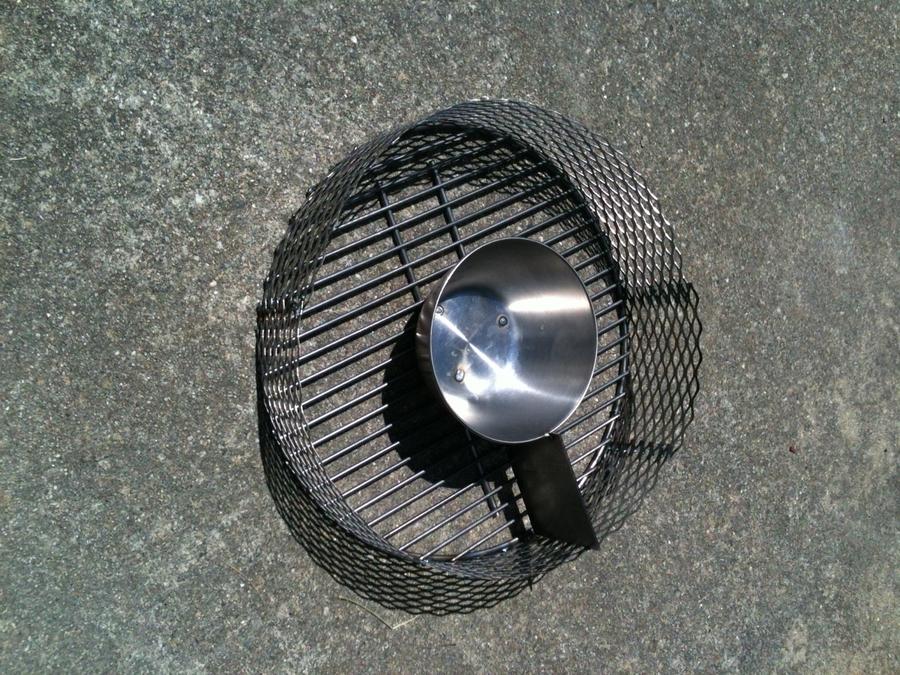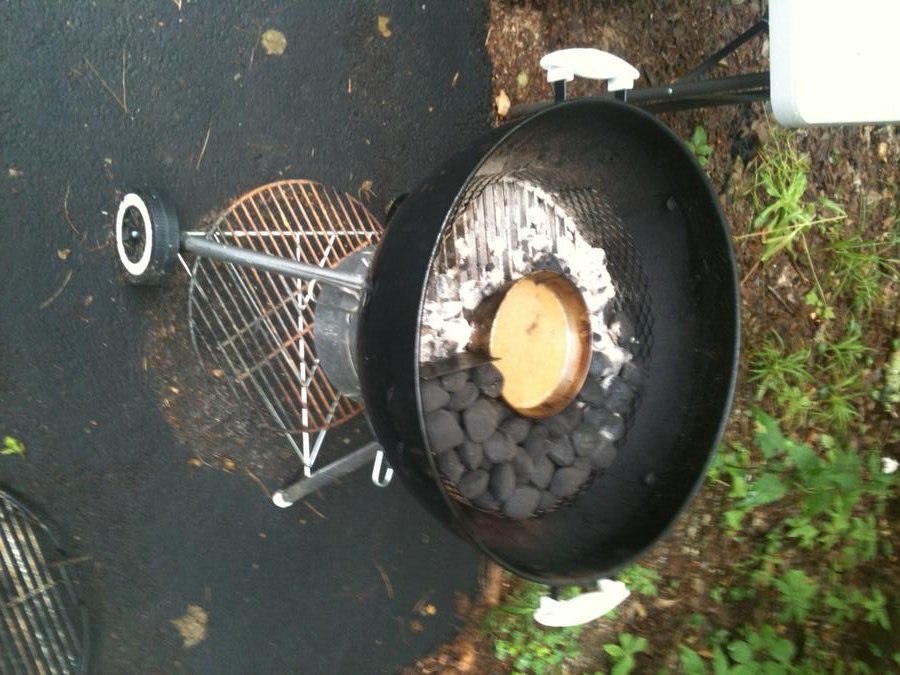I use my Weber 22.5 Kettle quite a bit, and I use hot burning natural charcoal briquets, plus I add lump charcoal and mesquite/hickory wood chunks. I have always heeded Weber's warnings and kept my coals off of the enameled sides of the kettle, to avoid premature burn-through, which limits how much charcoal can be used. At times I have wanted to get a longer burn than I could just using the stock charcoal grate (while keeping the coals off the enameled Kettle). Eventually, I decided to build a charcoal basket out of Expanded Metal to allow using a larger amount of charcoal while keeping the coals off of the sides.
I considered the options of a plain basket, a basket with a zig-zag labyrinth, and in the end decided to incorporate a central water bowl to get a circular track around the perimeter, with a steel stop/start barrier.
It turned out that Lowe's sells the Weber Replacement Charcoal Grates for my 22.5 Weber for $11 (Weber # 7441), so that became my starting point. Lowe's also sells a 12" X 24" sheet of 18 Gauge Expanded Steel for $10.
Using hand snips I cut the Expanded Steel into 3 strips each 4" wide and welded them onto the Weber Charcoal Grate for this Plain Weber Kettle Charcoal Basket (the circumference is about 5-6" longer than 48" so 2 strips won't make it around):
Taking it to the next level from a 4" deep Plain Charcoal Basket, I added to a Stainless Steel kitchen bowl in the center and a Sheet Steel Start/Stop Baffle to create a long burning circular track around the water bowl. The perimeter track will be filled with unlit briquets and then a handful of lit briquets will be placed at one end of the circular coal track - up against the start/stop baffle. The coals will burn their way around the track until all of the coals are burned. Water evaporating from the central bowl add moisture.
I used my little 120 VAC MIG welder with the power knob turned way down, and made quick welds so as not to liquify too much of the thin stock too quickly. The Weber Charcoal Grate is very easy to weld to, the trick is NOT liquifying too much of the other thin materials.
I considered the options of a plain basket, a basket with a zig-zag labyrinth, and in the end decided to incorporate a central water bowl to get a circular track around the perimeter, with a steel stop/start barrier.
It turned out that Lowe's sells the Weber Replacement Charcoal Grates for my 22.5 Weber for $11 (Weber # 7441), so that became my starting point. Lowe's also sells a 12" X 24" sheet of 18 Gauge Expanded Steel for $10.
Using hand snips I cut the Expanded Steel into 3 strips each 4" wide and welded them onto the Weber Charcoal Grate for this Plain Weber Kettle Charcoal Basket (the circumference is about 5-6" longer than 48" so 2 strips won't make it around):
Taking it to the next level from a 4" deep Plain Charcoal Basket, I added to a Stainless Steel kitchen bowl in the center and a Sheet Steel Start/Stop Baffle to create a long burning circular track around the water bowl. The perimeter track will be filled with unlit briquets and then a handful of lit briquets will be placed at one end of the circular coal track - up against the start/stop baffle. The coals will burn their way around the track until all of the coals are burned. Water evaporating from the central bowl add moisture.
I used my little 120 VAC MIG welder with the power knob turned way down, and made quick welds so as not to liquify too much of the thin stock too quickly. The Weber Charcoal Grate is very easy to weld to, the trick is NOT liquifying too much of the other thin materials.












